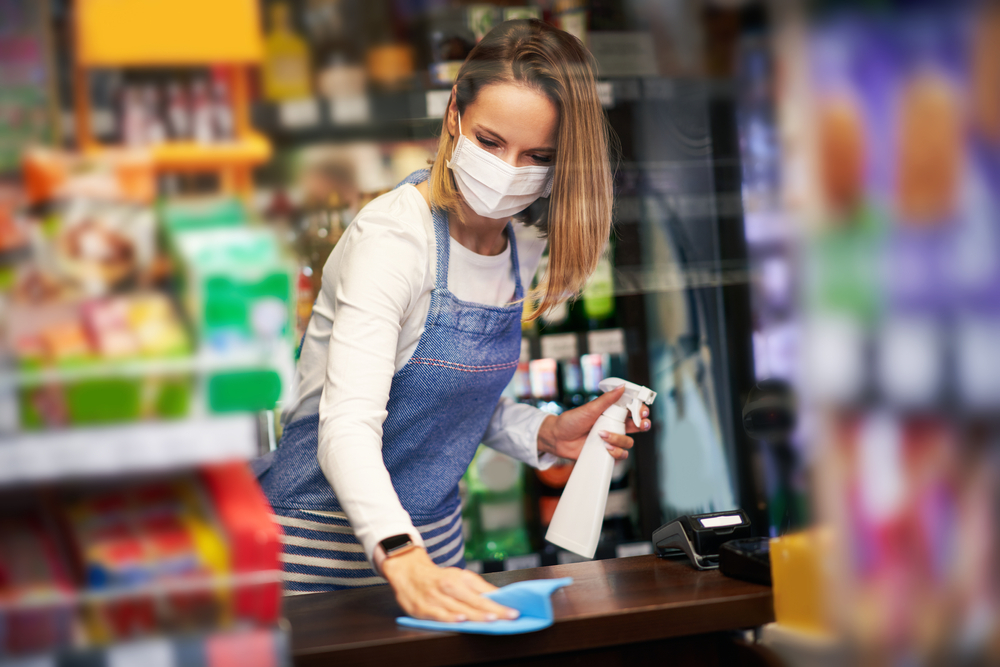Proper cleaning enhances the appearance of facilities and, more importantly, keeps germs from spreading from surfaces to people. While cleaning is an essential process, everyone has been met with an unclean facility, an overpowering cleaning chemical fragrance or even a slippery floor at least once in their life. There are certain mistakes that can negatively impact cleaning results, brand reputation, sustainability and the bottom line. Understanding these in more detail is crucial to running an efficient and effective operation.
Everyday Cleaning Mistakes that can Impact Cleanliness
There are numerous missteps that can complicate the cleaning process, and in turn, the cleanliness of your facility. Be on the lookout for the following mistakes and lapses so that you can enhance your approach to facility maintenance, quickly correct bad habits and reduce overconsumption.
Using chemicals that create risks.
As people become increasingly aware of the impact that cleaning chemicals have on the air we breathe and our overall health, it’s important to consider whether your inventory is leading to unnecessary risks. Many conventional cleaning chemicals contain harmful ingredients that can irritate eyes and skin, cause headaches and nausea and even negatively impact indoor air quality (IAQ) by releasing volatile organic compounds (VOCs).
With cleaning occurring more frequently than before the pandemic, using safe and effective products is more important than ever. Electrochemically-activated solutions (ECAS) generated using water, salt and electricity are powerful enough to tackle pathogens of concern, but are also non-irritating and safe for the environment.
Cleaning in the wrong order.
Cleaning should be an organized process that carefully considers high-touch areas and cross contamination risks. Approaching cleaning in the wrong order can actually spread germs and leave surfaces unclean.
Always clean from top to bottom. This enables you to dislodge dust and other soils from higher areas that can fall to floors before you clean them. Additionally, cleaning from top to bottom maximizes germ removal. For example, you wouldn’t want to wipe a restroom floor or toilet seat and then address a stall door or counter.
Only conducting floor care manually.
Taking care of floors is a time-consuming process but an essential one. It’s hard to ignore the quality of flooring upon entering a facility. Whether tile, wood, concrete or another material, floors play a part in shaping first impressions regarding cleanliness. Plus, clean floors promote safety by helping to reduce the risk of slip and fall accidents. Relying solely on employees to conduct floor care can mean that other areas of the facility don’t have time to be addressed.
Implementing robotic machines that can work alongside and support your team members helps take some of the burden of floor care off their to-do lists. Consider cobots that are easy to operate, safely avoid people and obstacles and provide detailed reporting. While some floor care tasks may still need manual intervention and oversight, having an automated helper can certainly improve the floor care process.
Forgetting to consider sustainability.
By its nature, the process of cleaning requires the consumption of many resources. Keeping your program from becoming too wasteful is essential as an increasing number of buildings look for ways to be more sustainable. By taking a closer look at your cleaning operations with a green lens, you can drive chemical, water and energy savings.
Have durable tools and equipment on site that will effectively clean and also last for a reasonable amount of time to keep them out of landfills. Avoid single-use supplies wherever possible. As previously mentioned, ECAS are a greener option for cleaning and disinfecting. Plus, the on-site generators that produce ECAS enable you to eliminate purchasing replacement bottles made from plastic. Simply reuse a set of containers for each custodial cart in your facility.
Course Corrections in Cleaning
Commercial cleaning is easier said than done. The process requires dedicated employees who are knowledgeable about how to carry out cleaning and disinfection using the appropriate supplies, chemicals and machines. With all eyes on cleanliness in offices, retail stores, schools and other types of facilities, cleaning needs to be completed correctly. Cleanliness not only enhances visitor confidence and brand reputation, it is one of the best defenses against potentially harmful pathogens.
To course correct common mistakes and even avoid them altogether, it’s essential to train staff so they can effectively and efficiently clean. Providing visual demonstrations and opportunities for hands-on learning and constructive feedback is essential to maintaining healthy and safe buildings. Both tenured employees and new hires will appreciate the time you take to guide their education and make them better cleaners.
Regular training and investment in the right tools, equipment and chemicals helps employees uphold cleanliness every day. At GSF USA, we care about clean and the people behind clean. Contact our team here and follow us on LinkedIn and Facebook to learn more about our services and specialties.

